Our tour through South Africa was one of the most exciting adventures of our long-term trip. Today, we’ll reveal all the sights in South Africa, as well as many tips on organization, costs, our route, and much more. If you’re not keen on South Africa after this post, please contact us. We’d be happy to convince you personally over the phone.
We often think back to our tour through South Africa. The diversity of landscapes, flora and fauna, the people, and the atmosphere – simply indescribable. The country captivated us from the very beginning and never let us go. It may sound cheesy or cheesy, but for us personally, South Africa is one of the most beautiful countries in the world.
- 1. Our route through South Africa
- 2. By rental car through South Africa
- International driving license
- Renting the rental car
- Roads in South Africa
- Tolls & fees
- Speed limits and speed checks
- Gas stations & refueling in South Africa
- 4. Booking accommodation
- Booking with Airbnb
- Booking with Booking.com
- Booking with Hostelworld.com
- Try Couchsurfing
- 5. Round trip South Africa – How much does it cost?
- 6. Safety on the round trip
1. Our route through South Africa
As is often the case with us, we didn’t plan too much in advance. We had booked flights to Johannesburg, accommodation for the first few nights, and a rental car. We wanted to organize everything else spontaneously in advance. All we knew was that we wanted to drive to Cape Town and experience as much as possible along the way without stressing ourselves out. And so our tour through South Africa took us from Johannesburg to the Drakensberg, from Durban to the Garden Route, and then on to Cape Town.
In total, we were on the road for almost a month, but then spent another month in the country. We simply didn’t want to leave yet and were able to spontaneously postpone our return flight. During this time, we covered almost 3,200 kilometers by car. In detail, the route through South Africa this time looked something like this:
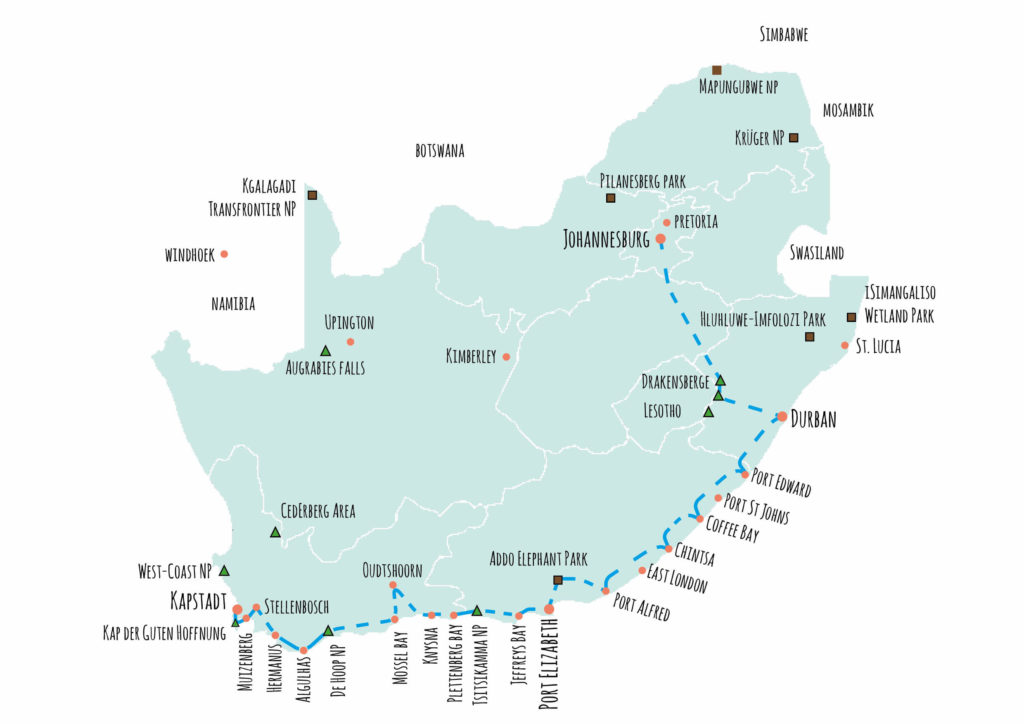
2. By rental car through South Africa
Traveling with your own rental car is much easier than you might imagine. You’ll quickly get used to driving on the left – most of the time, you’ll drift inconspicuously with the flow of traffic. On the usual travel routes, you’ll find well-maintained asphalt roads. The traffic signs are also very similar to European ones. However, there are important aspects to consider:
International Driver’s License
Generally, you need an international driver’s license outside of Europe. This driver’s license is nothing more than a translated version of your German driver’s license. While it’s not explicitly requested everywhere, to avoid any problems, we recommend that you always carry it with your German driver’s license. It would be a shame if your planned road trip fell through at the rental car counter because of such a trivial matter.
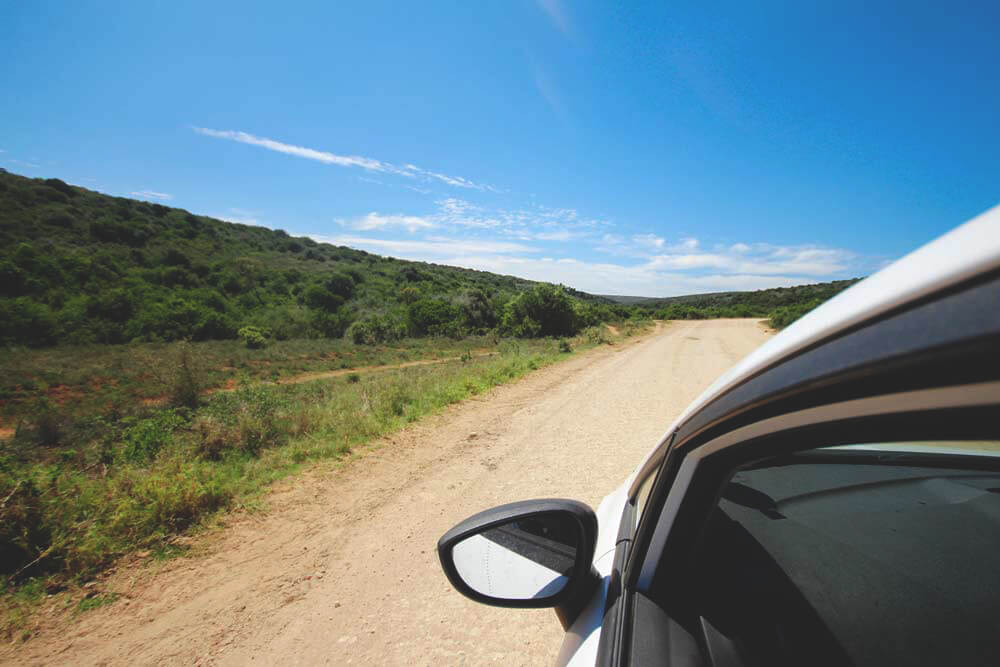
You can easily apply for an international driver’s license at your local driver’s license office. You’ll need a biometric passport photo, your EU driver’s license, and an identity card or passport. An international driver’s license usually costs between €10 and €20 and is issued immediately on the spot.
Renting a rental car
The easiest way to find a rental car is through price comparison portals such as billiger-mietwagen.de, mietwagen-check.de or Check24, through the ADAC motoring club or directly from the car rental companies. Please don’t just pay attention to the price, because the included services are crucial.
Important services include:
- Vehicle class
- Limited liability insurance coverage
Insurance coverage (fully comprehensive/partial comprehensive insurance) - Deductible amount
- Additional insurance such as theft protection, tire protection, glass protection, etc.
- Unlimited mileage, additional driver
- Minimum age of the driver and, if applicable, local fees for drivers under 25 (see rental conditions)
- One-way rental (if the rental location is different from the drop-off location)
- Cross-border regulations
- Free cancellation
- Car rental rating
- Navigation system (see also: Navigation)
- If applicable Child seat and other accessories
As in other areas of life, you have to decide for yourself which insurance you consider necessary. However, our recommendation is not to skimp on insurance. We opted for fully comprehensive insurance with no deductible and a €1 million liability insurance limit.
Theft protection and unlimited mileage were equally important to us. If you want to share driving with someone, you should specify an additional driver. A rental day always lasts for 24 hours. Renting the car at 11 a.m. and returning it the next day at 12 p.m. therefore makes little sense.
Roads in South Africa
The road network is very well developed; only off-the-beaten-track areas will you encounter unpaved roads. A four-wheel drive vehicle is therefore not necessary (except for the Sani Pass to Lesotho). However, there are definitely unpaved roads a little off the main roads and in national parks. Please drive slowly and avoid large stones. On country roads, you will often be warned about “pot holes” (especially on the Wild Coast). These are potholes. You should really slow down and drive carefully here; some are very deep and dangerous.

Especially in cities, you will find intersections without traffic lights. While there are yield and give way signs, you will often also find intersections with stop signs in all directions. The so-called “all way stop” rule applies here – all cars stop first and then drive off in an orderly manner as each arrives.
Tolls & Tolls
Some of the national roads are subject to tolls. Toll sections are indicated with a yellow circled “T.” Tolls apply to all vehicles, including motorcycles. The price for passing through varies depending on the toll station and vehicle class.
The frequency with which you have to pay tolls depends on your route. On longer routes, you may even be asked to pay more than once. On the N3, a single pass costs an average of around R45 (€3.00). On the N4 towards Kruger National Park, you’ll have to dig a little deeper into your pockets at around R60–70 (€4.30) per pass.
On our entire route from Johannesburg to Cape Town via the N2 and N3, we had to pay tolls six times. Four of these were on the way from Johannesburg to the Drakensberg Mountains (N3). Once in Nature’s Valley (near Stormsriver) and again shortly before Cape Town (Chapman’s Peak).
Our toll costs amounted to approximately €18. You can find more about our route in our travel guide. You can also find the location of the toll stations there. While avoiding toll stations is often possible, it’s not really recommended. You’ll either have to take a long detour or only travel at walking pace on unpaved roads.
Speed Limits and Speed Controls
The speed limit within built-up areas is 60 km/h. On country roads, the maximum speed is 100 km/h, and on motorways, 120 km/h. This applies, of course, only if no other speed limit is posted. There are frequent speed checks along the way. The fines for speeding are said to be very high in South Africa. So if you don’t want to get into trouble, it’s best to follow these rules.
Unfortunately, we also heard of corrupt traffic police officers stopping tourists for seemingly obvious reasons. Sometimes it was their dipped headlights, which are supposedly prohibited during the day, or “road tolls” that were due. Most often, corrupt officials offer a “discount” for paying in cash and forgoing a receipt. Where the money ultimately ends up should be clear to everyone.
These schemes are, of course, illegal in South Africa as well. Therefore, in this case, you should refuse payment and refer to the “Roadside Anti-Corruption” Initiative. In most cases, the problem should resolve itself. Otherwise, it helps to give the name of the police officer or the license plate number of the patrol car to the anti-corruption hotline at 082 451 7044.
Gas Stations & Fueling in South Africa
Fueling is very convenient in South Africa. Almost always, the attendant will beckon you to a free pump. Once there, simply state the fuel level in Rand (or simply “full”) and the fuel type (usually “unleaded” = gasoline; see the fuel cap). The attendant will then fill up your car. A small tip is expected for this service.
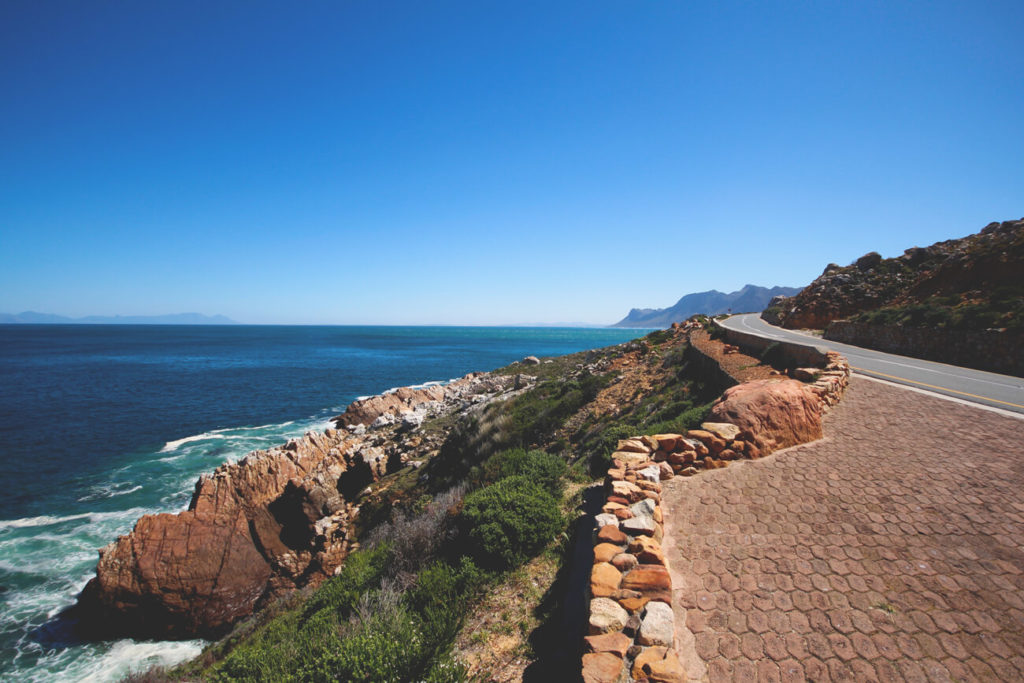
Our Ford Fiesta (5-door) consumed an average of 6.3 liters of gasoline (unleaded) per 100 kilometers under normal driving conditions. One liter cost approximately R12 (€0.80). On our 3,200-kilometer road trip, fuel costs amounted to approximately €160.
4. Book Accommodation
Book with Airbnb
Airbnb is definitely our number 1. Here you’ll find countless private apartments, rooms, studios, houses, villas, and other unusual accommodations such as tree houses, tents, or even boats. You enter your desired destination, along with the dates and length of stay. You can then filter by amenities you’d like, such as price range, internet, kitchen, pool, gym, or property type.
Book with Booking.com
The selection of accommodations at Booking.com* is simply gigantic. You’ll find a truly diverse range of affordable deals here. The site is very clearly laid out. Enter your destination, date, and number of people, and off you go. The results will then be presented to you. Here, too, you can filter the results by price, category, and rating. Once you’ve found suitable accommodation, you should read the reviews there as well. You can usually find more reviews on TripAdvisor.
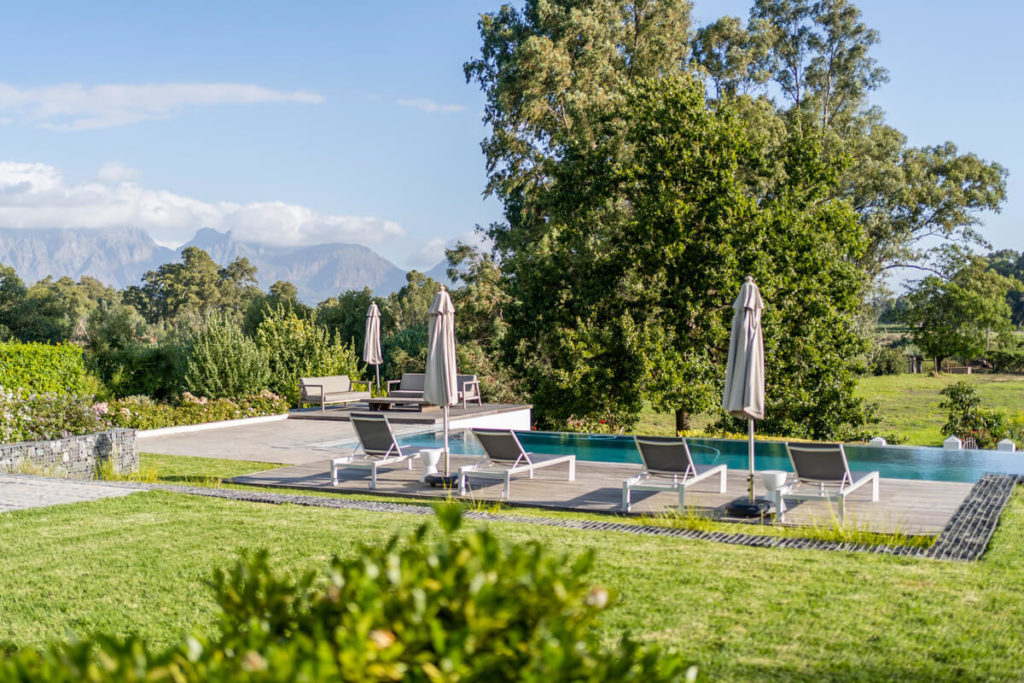
Book at Hostelworld.com
Hostelworld is the platform par excellence, especially for travelers on a tight budget. The selection is huge, and you can often find good prices here. It’s also important to check the reviews posted here. Hostels aren’t just affordable; you’ll also meet a lot of like-minded people there. People often join together for activities.
It’s also worth calling the hostel in question. Often, quotas are limited on online platforms, so you might see that the hostel is fully booked. However, this is usually not the case in reality. They can tell you exactly which rooms and beds are still available over the phone.
Try Couchsurfing
It’s also completely free. On the Couchsurfing platform, people from all over the world offer a bed, a sofa, or a mattress. The good thing about it is that you get to meet a lot of people, immerse yourself in their world, and experience life outside of a hotel.
The overnight stay doesn’t cost you a cent. Disadvantage: It can, of course, happen that the accommodation doesn’t quite meet your expectations, the host leaves you at short notice, or you just don’t get along with the people. However, for cosmopolitan, spontaneous, and crazy people, it’s a super cool platform with a lot of potential.
5. South Africa Tour – How Much Does It Cost?
The costs of a trip are as individual as the itinerary itself. Especially in South Africa, you can experience an incredible amount. Of course, much of this puts an additional strain on your vacation budget. But even the fixed costs are anything but easy to quantify. Which flights and car class should you book? What are your accommodation requirements? Do you want to experience action and adventure every day? All of this must be taken into account.

To give you a rough idea, we’ve opened the expense booklet and written everything down in this chapter. We’ve divided the expenses into different categories and will go into more detail about our travel behavior and the costs incurred.
Expenses at a glance for a 30-day South Africa tour and 7 days in Cape Town:
- Rental car: €662
- Accommodation: €821
- Food and shopping: €576
- Sightseeing & activities: €352
- Other: €104
Most of the costs were incurred in the accommodation category, followed by the rental car and food. The daily costs amounted to €68 for two people, or €34 per person. We lived budget-consciously, but didn’t miss out on anything. Those who stay in cheaper accommodations and occasionally cook their own meals can save a lot of money.
However, everyone has to decide for themselves how they want to travel through the country. In the end, however, one thing is certain: South Africa can be traveled very cheaply and comfortably. The country is perfect for a personalized tour. Every single cent was more than worth it for this unforgettable adventure.
6. Safety on a Tour
South Africa still has a high crime rate due to poverty and social inequality. However, we should keep things in perspective. Most travelers experience nothing at all while traveling. With common sense and following a few simple tips, you can significantly reduce the risk.
You should copy your travel documents in advance and upload them online (also by email) so that you at least have a usable copy if they are lost. Lock your valuables in your room or hotel safe and only take the bare essentials with you. If there’s no safe, it’s best to hide your valuables in different places. Expensive jewelry and valuables can also be left at home.
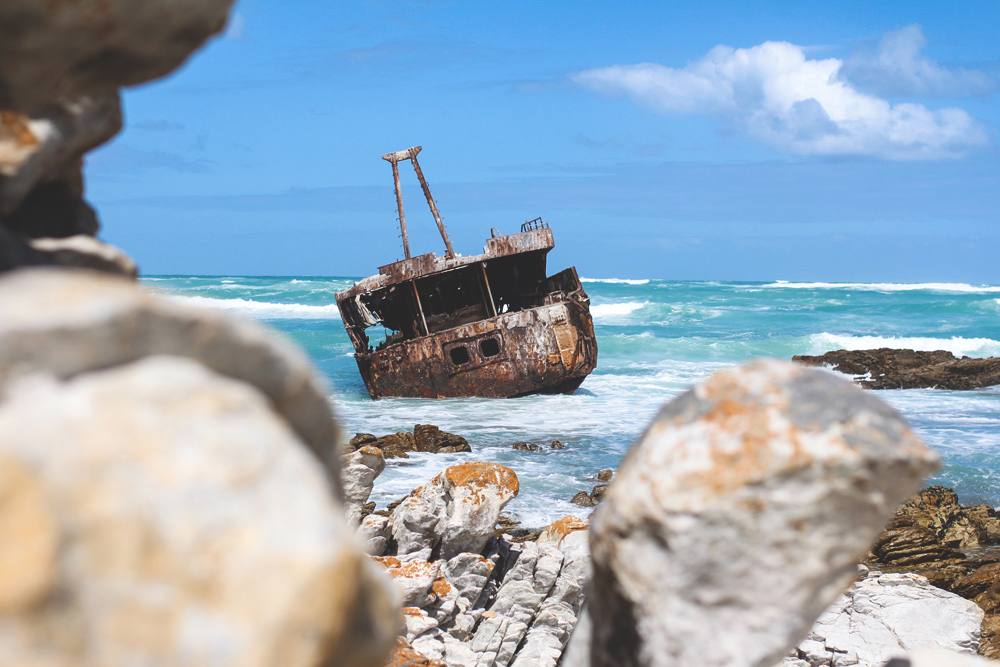
Ask at your accommodation which (urban) areas are considered safe and which to avoid. Solo travelers should join a group if possible, and you should never travel alone, especially in the evening. If you still want to do something after dark, take an Uber or a taxi directly to the entrance. Have someone pick you up from there, and avoid long walks. Deserted or strange areas are, of course, absolutely off-limits.
Use common sense
In clubs and bars, you should never leave your drink unattended. You wouldn’t be the first victim of knockout drops or other drugs. However, this rule applies even in Germany. Always be aware of what’s going on around you, especially in large crowds, such as on buses and trains. Don’t carry valuables visibly. If you are attacked, don’t resist! The propensity for violence is very high!
Never let your credit card out of your sight and, if possible, only use ATMs located in banks. Be sure to save your bank’s emergency number so you can respond quickly to mysterious debits. A second credit card and some cash as an emergency fund are always a good idea.
During our entire weeks in South Africa, nothing happened to us or the many people we met along the way. We only felt unsafe when we were traveling alone in Johannesburg. We avoided going out after dark.